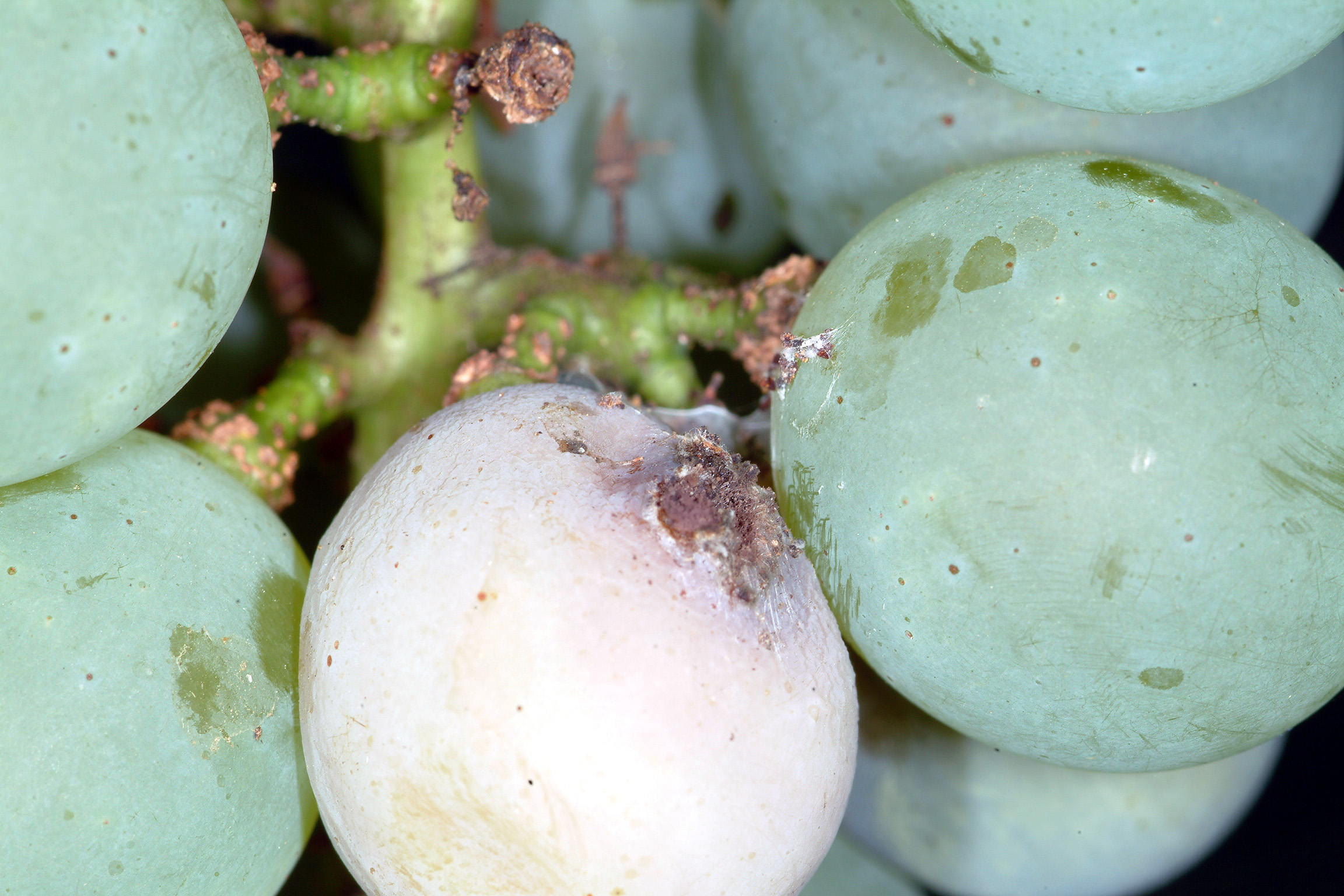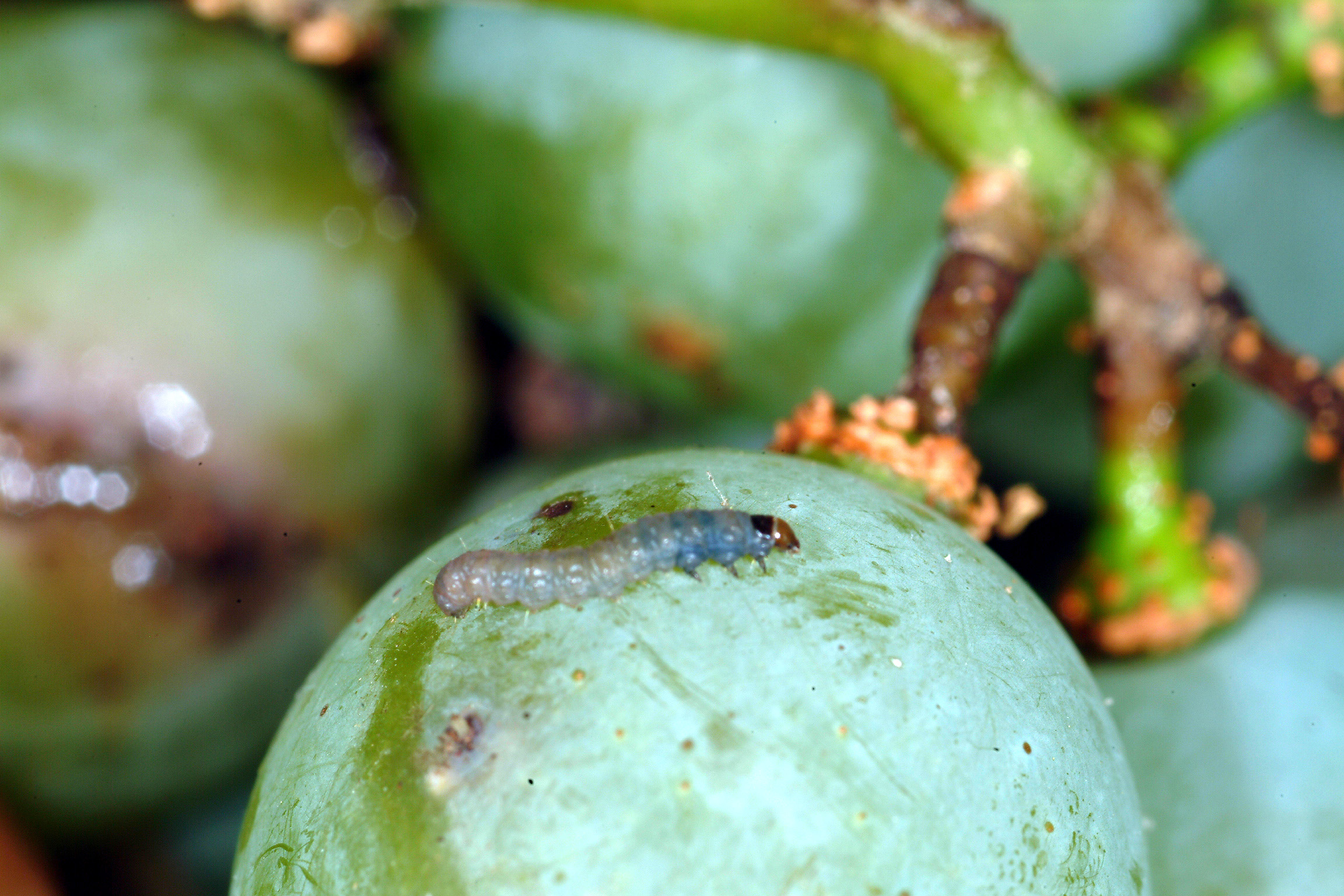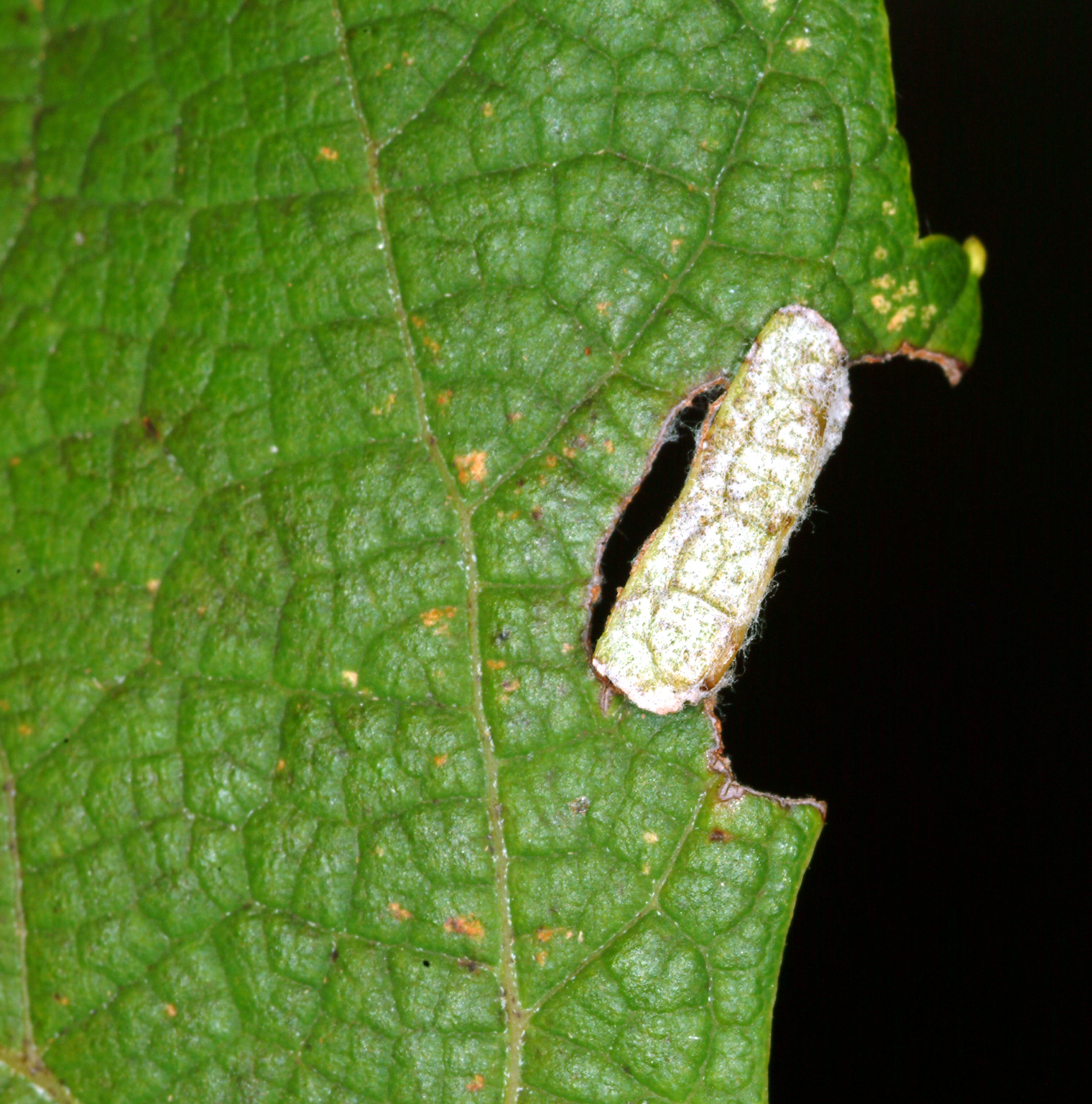Grape Berry Moth on Grapes
Return to Insect Pests
Grape berry moth (Lobesia viteana) adults are active and about 1⁄4 inch long. When moths are at rest with wings folded, a brown band is visible across the middle of the insect. Moths are gray-blue with brown markings on the hind portion of the body. Mature larvae are 2⁄5 inch long, pale olive-green, and can have a purplish tinge as a result of the food they ingest. Pupae are about 1⁄5 inch long, greenish-brown to dark brown, and are found under a flap that larvae cut from leaves and fold over. Larvae damage vineyards by feeding on grape blossoms and berries. Infested berries may appear discolored, shriveled, and covered with fine webbing; secondary fruit rots are also common. This insect has three generations per year.

Off-colored berry with webbing deposited by grape berry moth.
(Photo: Ric Bessin, University of Kentucky)

Grape berry moth larva on berry.
(Photo: Ric Bessin, University of Kentucky)

Grape berry moth pupa covered by a folded leaf flap.
(Photo: Ric Bessin, University of Kentucky)

Grape berry moth adult.
(Photo: Todd Gilligan, Bugwood.org)
Management:
- Clean up or bury leaf litter in winter to eliminate overwintering pupae.
- Time insecticide applications using a developmental model on the UK Ag Weather website.
- Monitor adult moth activity using pheromone traps, which can enhance timing of insecticide applications.
